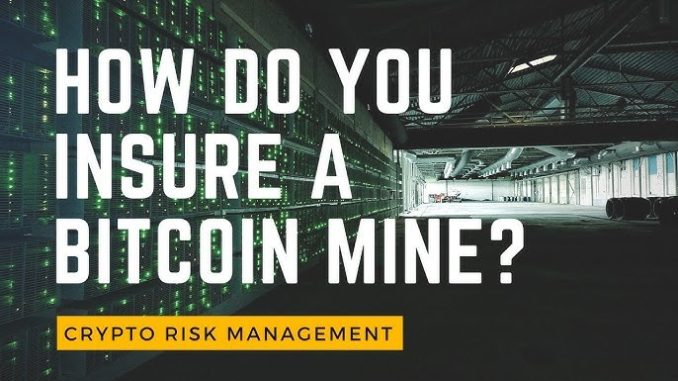
**Insurance for crypto miners is becoming an essential safeguard in an industry where volatility, technical risk, and operational exposure converge to create a uniquely challenging environment.**
Crypto mining operations, whether small-scale setups or large industrial farms, face a wide array of risks that can disrupt productivity and erode profitability. These risks range from hardware failure and power outages to cyberattacks and regulatory shifts. As the mining landscape matures, insurance is no longer viewed as a luxury—it’s a strategic tool for protecting assets, ensuring continuity, and signaling credibility to investors and partners. The complexity of mining infrastructure, combined with the high value of mined assets, makes tailored insurance coverage a critical component of long-term sustainability.
One of the most immediate concerns for crypto miners is equipment protection. Mining rigs, GPUs, ASICs, and cooling systems represent significant capital investments. These machines operate continuously under high loads, making them susceptible to wear, overheating, and electrical faults. Insurance policies that cover physical damage, theft, and environmental hazards help mitigate the financial impact of equipment loss. This is especially important for operations located in regions prone to natural disasters or unstable power grids. Without coverage, a single incident could wipe out months of earnings and stall future growth.
Power consumption and energy dependency introduce another layer of risk. Mining operations rely on consistent and affordable electricity to remain profitable. Unexpected outages or price spikes can lead to downtime and reduced output. Business interruption insurance can help offset lost income during these periods, allowing miners to recover without compromising their financial stability. It also provides a buffer against external factors that are beyond the miner’s control, such as grid failures or geopolitical disruptions that affect energy supply.
Cybersecurity is a growing concern in the mining sector. As operations become more connected and data-driven, they become targets for hackers seeking to disrupt services or steal digital assets. Insurance that covers cyber incidents—including unauthorized access, ransomware, and data breaches—can help miners respond quickly and effectively. This coverage often includes support for forensic investigation, legal defense, and public relations, all of which are vital in maintaining trust and operational integrity. In a space where reputation and reliability are closely linked, the ability to manage cyber risk is a competitive advantage.
Regulatory uncertainty adds another dimension to the insurance equation. Crypto mining is subject to evolving laws and policies that vary widely by jurisdiction. Changes in tax treatment, environmental regulations, or licensing requirements can impact operations overnight. Insurance that includes coverage for legal expenses related to regulatory compliance or enforcement actions provides a layer of protection against these shifting sands. It allows miners to navigate legal challenges without derailing their business model or exhausting their resources.
Liability coverage is also relevant, particularly for mining operations that interact with third parties or operate in shared facilities. If a mining rig causes a fire, damages property, or injures someone, the operator could be held liable. General liability insurance helps cover the costs of legal claims, settlements, and medical expenses. It’s a safeguard that ensures miners can operate with confidence, knowing they’re protected against unforeseen incidents that could lead to litigation.
Choosing the right insurance provider is critical. Not all insurers understand the nuances of crypto mining, and generic policies may leave important gaps. Providers with experience in digital assets and emerging technologies are better equipped to assess risk and offer customized solutions. They can help miners evaluate their exposure, structure coverage appropriately, and adapt as the business evolves. This partnership approach is especially valuable for startups and growing operations that need flexible support as they scale.
Documentation and transparency are key to securing effective coverage. Miners should maintain detailed records of equipment purchases, operational logs, maintenance schedules, and security protocols. This information supports the underwriting process and strengthens the case for reimbursement in the event of a claim. It also demonstrates a proactive approach to risk management, which can lead to better terms and lower premiums. Insurance is most effective when it’s part of a broader strategy for resilience and accountability.
Ultimately, insurance for crypto miners is about enabling growth with confidence. It provides the stability needed to invest, expand, and innovate in a sector defined by rapid change and high stakes. It reassures stakeholders that the operation is prepared for the unexpected and committed to long-term success. In a world where digital infrastructure is becoming as critical as physical infrastructure, protecting that investment is not just smart—it’s essential. Insurance offers a foundation of trust that allows miners to focus on what they do best: powering the future of decentralized finance.